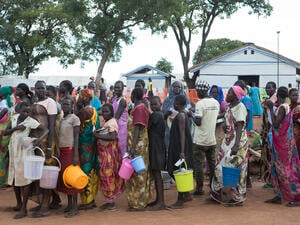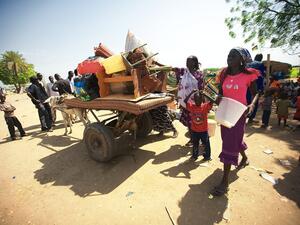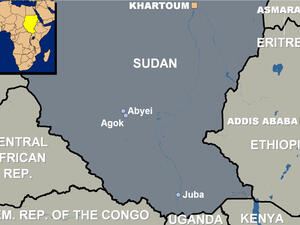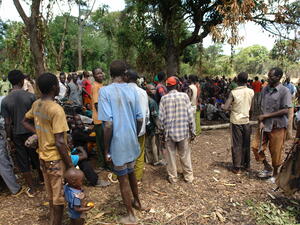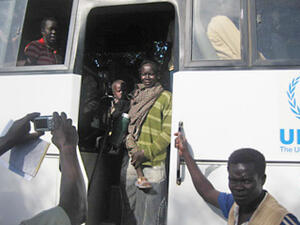South Sudan: Returns reach 50,000 mark
South Sudan: Returns reach 50,000 mark
Yesterday (Monday), the UNHCR-assisted voluntary repatriation operation bringing South Sudanese refugees back to their homeland surpassed the 50,000 mark. The day's returnees included a convoy from Fugnido camp in Ethiopia bringing home 543 Sudanese refugees to Upper Nile State, and two flights with 100 returnees from Mboki camp in Central African Republic (CAR) to Yambio, Western Equatoria State.
During the first ten days in April, Sudanese refugees from the Central African Republic, Uganda, Kenya, Ethiopia, Egypt and Libya were transported home. All six return corridors linking neighbouring countries of asylum to South Sudan are operational. As of today, 50,533 Sudanese have been assisted to return home since the repatriation exercise started in March 2005.
The 50,000th returnee in person was actually a family travelling on an organized flight from Mboki camp in the Central African Republic back to Yambio in Western Equatoria State after 16 years in exile. Luigi Bangbadi, the 62-year-old head of his family of 11, said: "Right now I'm not sure that I'm actually back home. It is a great surprise and I am very happy to see all this. It will not be easy to start again from zero, but we are confident, we will make it."
Over the past weeks the repatriation movement peaked at nearly 4,000 returnees per week. We aim to scale it up to 5,000 per week during April, to assist as many voluntary returns as possible before the rainy season starts in May, when most roads will nearly be impassable for about four to six months.
Many of the returning South Sudanese refugees have been in exile for decades as a result of the north-south war in the 1980s and the 1990s.
Since the signing of the Comprehensive Peace Agreement (CPA) in January 2005 over 120,000 Sudanese refugees came back, 70,000 of them spontaneously, even though living conditions and the lack of infrastructure in South Sudan after years of civil war in the (1983-2005) are challenging. South Sudan lacks enough schools, clinics, water points and sanitation facilities, in addition to having to cope with deplorable road and bridge conditions. The humanitarian community has focused its efforts in return areas, to provide returning refugees, IDPs and the receiving communities with these basic services and with shelter. Returnees however, are not discouraged by prevailing conditions. They claim that they want to be back in time for the planting season to witness their next harvest in their villages of origin and that they want to help rebuild their country.
UNHCR is engaged in reintegration projects in major areas of return in South Sudan, including health, educational, water and sanitation, agricultural and livelihood projects. Over 100 projects have been completed in 2006 already. As part of the joint UN Work Plan for 2007, UNHCR plans to engage in providing clean water through the construction of around 65 boreholes, rehabilitate 60 health centres and 30 schools in high return areas. Thousands of returning internally displaced persons are also benefiting from these reintegration activities.
Upon return, returnees go through a mine awareness training and are provided with a return package of non food items, including kitchen sets, mats, blankets, jerry cans and plastic sheets among others. Furthermore, they do receive a three-month-food ration from WFP and seeds and tools from FAO.
As of today, out of an estimated 418,000 Sudanese refugees, approximately 300,000 are left in countries of asylum. Repatriation movements are organized out of the Central African Republic, the Democratic Republic of the Congo, Uganda, Kenya, Ethiopia, Egypt and Libya. In 2007, UNHCR expects to repatriate 102,000 Sudanese refugees and help them restart their lives.

